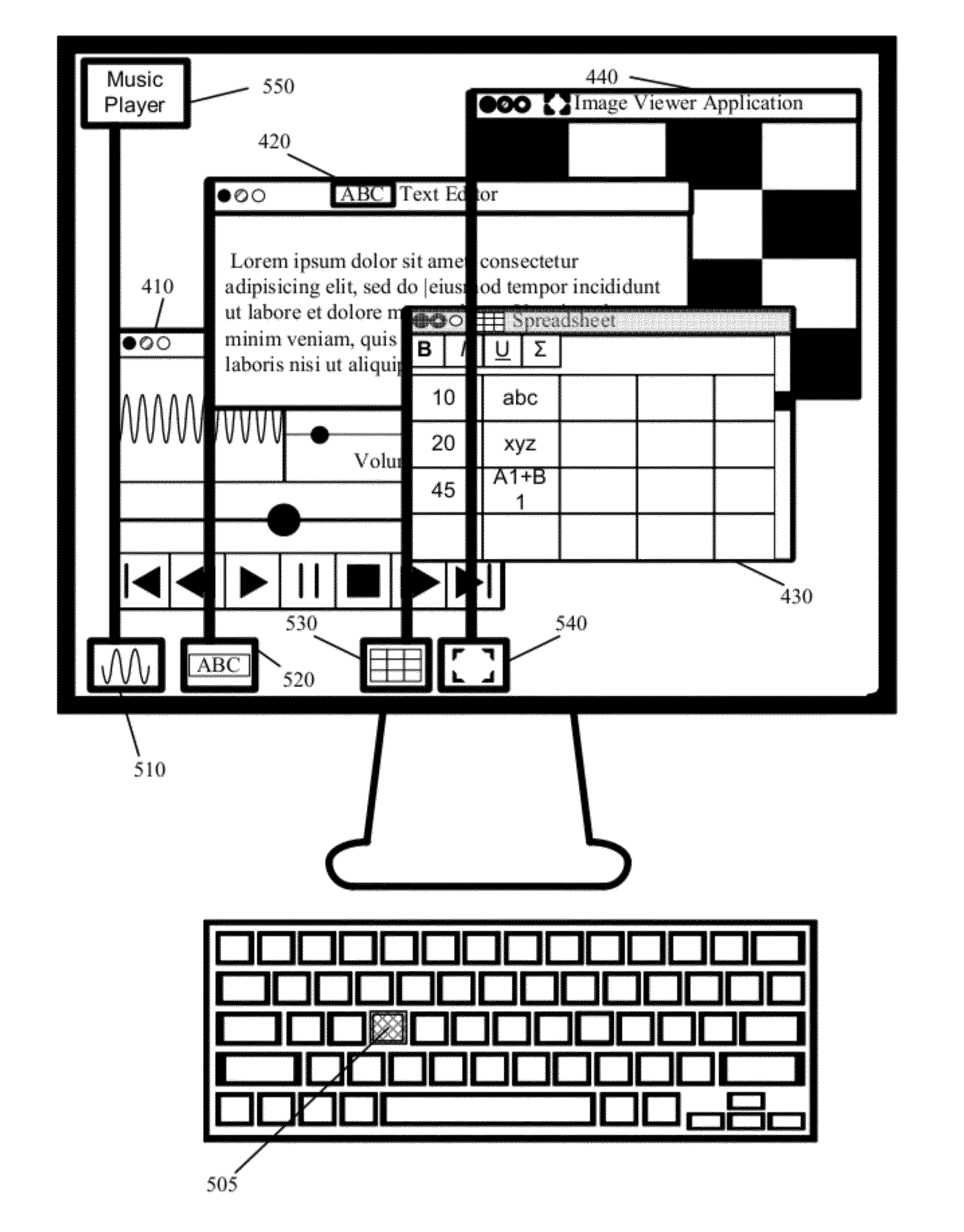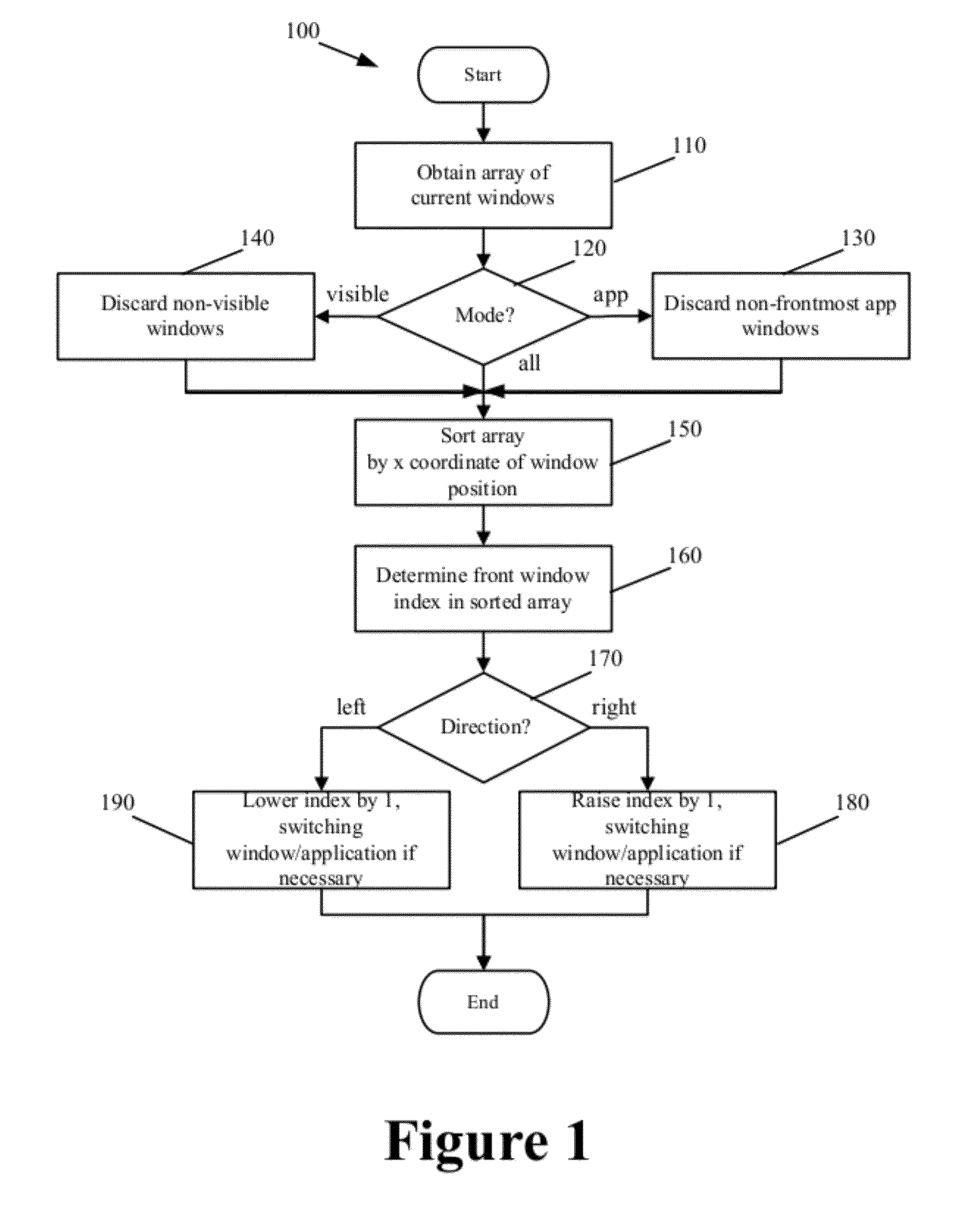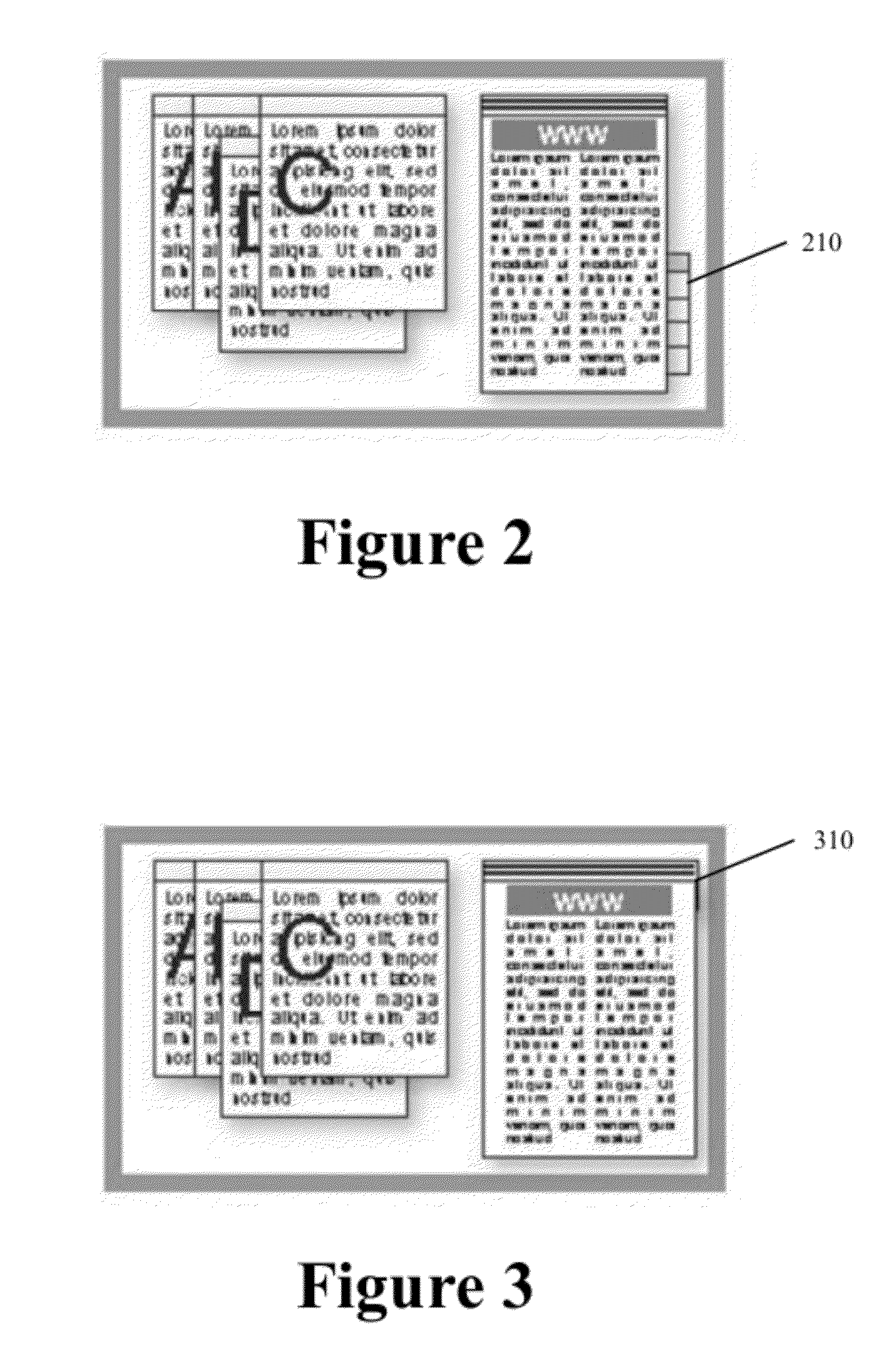Linear progression based window management
a window management and linear progression technology, applied in computing, instruments, electric digital data processing, etc., can solve the problems of users ignoring the benefits of viewing multiple windows, laborious methods of switching between windows, and more difficult users to access windows with the desired data or functionality, etc., to achieve easy customization, increase efficiency and expressivity, and increase efficiency
- Summary
- Abstract
- Description
- Claims
- Application Information
AI Technical Summary
Benefits of technology
Problems solved by technology
Method used
Image
Examples
Embodiment Construction
[0038]Some embodiments of the present invention provide new methods for switching between different windows in an efficient and repeatable manner. One such method is implemented by the linear switcher application of some embodiments. The linear switcher provides functionality for switching between different windows based on an x-axis ordering of the windows instead of the z-axis or other ordering of prior art. Such switching based on the x-axis ordering provides a contextually obvious and easily invocable means by which users can switch between different windows. Moreover, users can customize the ordering by positioning the windows in a manner that is most convenient to their particular workflow. In this manner, the ordering used by the linear switcher removes one or more levels of abstraction, is readily apparent and unambiguously identifiable on-screen. This consistent and streamlined mode of operation allows muscle memory to be utilized because operations of the linear switcher m...
PUM
 Login to View More
Login to View More Abstract
Description
Claims
Application Information
 Login to View More
Login to View More - R&D
- Intellectual Property
- Life Sciences
- Materials
- Tech Scout
- Unparalleled Data Quality
- Higher Quality Content
- 60% Fewer Hallucinations
Browse by: Latest US Patents, China's latest patents, Technical Efficacy Thesaurus, Application Domain, Technology Topic, Popular Technical Reports.
© 2025 PatSnap. All rights reserved.Legal|Privacy policy|Modern Slavery Act Transparency Statement|Sitemap|About US| Contact US: help@patsnap.com



